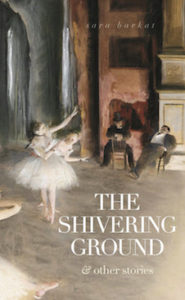< Return to Kahlil Gibran Poems
The Two Hermits
Upon a lonely mountain, there lived two hermits who worshipped God and loved one another.
Now these two hermits had one earthen bowl, and this was their only possession.
One day an evil spirit entered into the heart of the older hermit and he came to the younger and said, “It is long that we have lived together. The time has come for us to part. Let us divide our possessions.”
Then the younger hermit was saddened and he said, “It grieves me, Brother, that thou shouldst leave me. But if thou must needs go, so be it,” and he brought the earthen bowl and gave it to him saying, “We cannot divide it, Brother, let it be Thine.”
Then the older hermit said, “Charity I will not accept. I will take nothing but mine own. It must be divided.”
And the younger one said, “If the bowl be broken, of what use would it be to thee or to me? If it be thy pleasure let us rather cast a lot.”
But the older hermit said again, “I will have but justice and mine own, and I will not trust justice and mine own to vain chance. The bowl must be divided.”
Then the younger hermit could reason no further and he said, “If it be indeed thy will, and if even so thou wouldst have it let us now break the bowl.”
But the face of the older hermit grew exceedingly dark, and he cried, “O thou cursed coward, thou wouldst not fight.”
—Kahlil Gibran
About Kahlil Gibran
Khalil Gibran (جبران خليل جبران) was a writer, visual artist, and poet with a prolific collection of work. He was born in 1883 in a village in the Mount Lebanon Mutasarrifate and in 1893 moved with his family to the United States where he enrolled in school in Boston, then went back home when he was fifteen to enroll in the Collège de la Sagesse. In 1902 he came back to Boston, and two years later his artwork was displayed for the first time. In 1905 he published his first book, and after that studied art in Paris for three years. Gibran wrote books in both Arabic and English, including poems, plays, fables, short stories, and political essays.
His cousin, Kahlil G. Gibran, a sculptor, described his work in this way. “Ignoring much of the traditional vocabulary and form of classical Arabic, he began to develop a style which reflected the ordinary language he had heard as a child in Besharri and to which he was still exposed in the South End [of Boston]. This use of the colloquial was more a product of his isolation than of a specific intent, but it appealed to thousands of Arab immigrants.” (Robin Waterfield, 1998) He was inspired by the King James Bible, the works of William Blake, whose drawings were in Gibran’s opinion “so far the profoundest things done in English.” (Joseph Ghougassian, 1973) Other inspirations included Francis Marrash (فرنسيس بن فتح الله بن نصر الله مرّاش), Walt Whitman, and Friedrich Nietzsche.

“Self Portrait and Muse” by Khalil Gibran
With visual art Gibran worked in oils, pencil, ink, watercolor, and gouache, and created more than seven hundred pieces of visual art. His work is featured in a number of museums, and his work The Prophet has been translated into more than 100 languages and has never been out of print, becoming popular in the American counterculture and New Age movement. The book was admired by Elvis Presley, John Lennon, Johnny Cash, David Bowie, Gilad Hochman (גילעד הוכמן) and Dana Al Fardan. Gibran has museums, memorials, schools, a garden, and a crater on Mercury named after him.
I hope you enjoyed The Two Hermits by Kahlil Gibran! If you liked The Two Hermits by Kahlil Gibran, you might enjoy more poems by him below.
< Return to Khalil Gibran Poems
“Stunning…from start to finish. Barkat is a fierce new voice.”

